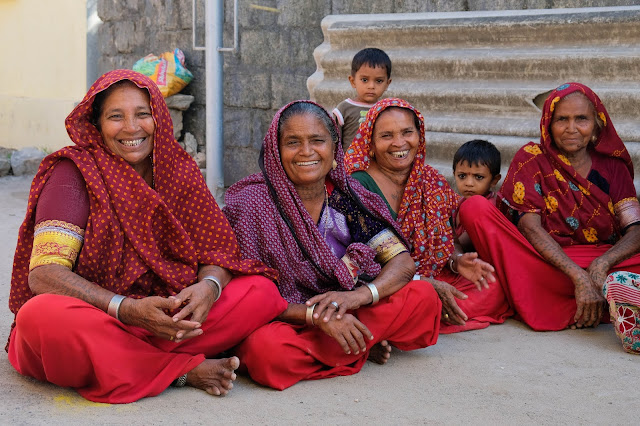It is a common, yet misplaced assumption that rural Indians lack the skills and the education to manage their affairs, and hence require constant intervention from external agencies. On the contrary, when the rural poor work collectively, share resources and collectively design their own approaches to socio-economic progress, they can drive significant change. A diverse set of institutions of the people are necessary for successful implementation of rural development programmes.
Panchayati Raj was introduced in 1992 to build democracy at the grass roots level and the Panchayati Raj Institutions (PRIs) were entrusted with the task of rural development in the country. The experience of the last 28 years seems to suggest that their role in development has been limited and inconsistent. This could be due to a numerous reason- the burden of lofty expectations, structural issues, their top-down approach and a lack of community involvement, amongst others. Even so, PRIs are important institutions and there is now a consensus for the need for structural reform and strengthening of these PRIs.
To ensure greater people's participation, the respective state governments have initiated the formation of many village level 'user' groups. These 'user groups' function independently of the PRIs on the subjects assigned to them under the Constitution. Over the last two decades these 'Peoples Institutions' (PIs) have played a catalytic role in rural India- their journey being anything but easy. The complex social dynamics of our villages and deeply rooted traditions and beliefs make their task particularly daunting, despite which, there is visible positive change being led by PIs.
Some significant People's Institutions dotting the rural landscape are:
- Village Development Committees (VDC)- are voluntary associations of villagers formed for local self-administration and are important vehicles of leading the community to transform themselves socially and economically. Over the years, VDCs have progressed to taking complete responsibility of the village from their basic needs to exploring better livelihood opportunities building awareness about agriculture, health, education, and economy within the community, and helping the community find solutions to their problems. During the pandemic the VDC's are playing the critical role of creating awareness, combating misinformation, ensuring proper hygiene and social distancing rules are adhered to, provision of relief to the returning migrants amongst a host of other such tasks in tandem with the local administrations.
- Watershed Development Committees - The Integrated Watershed Management Programme (IWMP) has become a cornerstone of the rural development in many of the rain-fed regions of the country, where a large proportion of the population lives in chronic poverty. Watershed challenges are unique to a geography; hence such projects necessitate a participatory approach involving all stakeholders concerned. The committees identify the requirements of a given area and finalise the activities to be undertaken in a participatory mode based on a village level assessment. They look after the development of various village level institutions such as Self-Help Groups (SHGs) and User Groups (UGs) ensuring that a participatory model is adhered to.
- Farmers Producer Companies (FPC): Most landholdings in India are small and marginal which makes farming unprofitable. The FPCs provide a mechanism for the multitudes of marginal farmers to collectivise and pool their capital, to undertake processing and trading of agricultural commodities more effectively. This enhances farm profitability and ultimately reduces distress. In July 2019, the central government announced a plan to promote 10,000 new FPOs over the next 5 years, as part of its efforts to increase farmer income and reduce agrarian distress. As per unofficial estimates there are currently over 7300 registered FPC's (including co-operatives, farmer societies) engaged in various activities such as cultivation, dairying and fisheries.
- Water User Associations (WUA): To enhance the productivity of its various medium and small irrigation projects, Government of India led a paradigm shift in governance by forming WUAs and devolving water governance to these associations. Under the prevailing participatory irrigation management (PIM) approach in India, water is supplied to the WUAs who take over the responsibility of operation, maintenance, and management of the irrigation schemes within their operational area. Presently, more than 55,000 WUAs covering over 13 million ha of gross irrigated area have been formed across India. The formation of these associations has proven to be a remarkably effective strategy for ensuring equitable management of water resources particularly for the small and marginal farmers. Numerous WUA's have also played a very key role in the implementation of the rural drinking water supply schemes.
- Village Health, Sanitation and Nutrition Committee (VHSNC): is one of the key elements of the National Rural Health Mission. The committee is formed at a village level, to take leadership and collective actions on issues related to improving health awareness and access of community for health services, address specific local needs and serve as a mechanism for community-based planning and monitoring. The VHSNC performs the key tasks of creating awareness about nutritional issues, identifying the nutritional status and deficiencies in the village especially among women and children and facilitate early detection of malnourished children in the community. Locally available food stuffs of high nutrient value are identified and disseminated, nutritional best practices are promoted, and referrals are made to the nearest Nutritional Rehabilitation Centre (NRC). The committees also supervise the functioning of Anganwadi Centre (AWC) in the village and facilitate its working in improving nutritional status of women and children.
- School Management Committee (SMC): is one of the important committees working in elementary school system, playing a very crucial role of actualizing the goals of Right to Education Act-2009 (RTE). Problems of non-enrolment and non-retention of children, lack of learning readiness, dropout and lack of proper environment and infrastructure are the major obstructs of elementary education in rural areas. The SMC thus plays a key role in developing the quality of teaching and monitors the working of the school, attendance of students, teachers and other employees. The SMC also monitors the quality of mid-day meals served and ensures proper functioning of toilets and drinking water facilities. The SMC is tasked with ensuring proper utilisation of funds that are provided by the Government, implementation of different schemes devised by the State as well as Central Government.








0 Comment